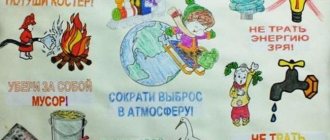Comprehensive education for parents about the dangers of drugs. Presentation
Drugs and children.
Comprehensive education for parents. Slide 1.
Slide 2. Drugs and drug addiction - what is it? Drugs are substances that can cause a state of joyful intoxication - euphoria, and when used systematically - addiction and severe dependence. Drug addiction is a state of chronic poisoning of the body in which a person experiences an irresistible attraction to drugs
Slide 3. What types of drugs are there? Drugs are of natural origin, known since ancient times, (marijuana, hashish, opium, hemp) and synthetic, i.e., obtained chemically ((LSD, amphetamine, barbiturates, ecstasy and others). Medicinal substances are sometimes used as drugs psychotropic group.
Slide 4. What effect does the drug have on a person? A person in a state of drug intoxication ceases to experience mental and physical pain, a feeling of lightness and comfort appears, a loss of self-control and a loss of sense of reality occurs. As a result of regular drug use, euphoria is quickly replaced by severe physical dependence - a person continues to use drugs for fear of experiencing withdrawal - an extremely difficult and painful condition.
Slide 5. Scary statistics. The drug use market in Russia in 2014 amounted to 8 million people (regular and occasional use). About 3 million actively use drugs. In Russia, more than 250 people become drug addicts every day. More than 60% of drug addicts are people aged 16-30 years, almost 20% are schoolchildren. The average age of people who use drugs for the first time in the Russian Federation is 15-17 years, but cases of children 9-13 years old, and even 6-7 years old, becoming “acquainted” with drugs have become more frequent. Every month 5,000 people die from drug addiction in Russia. Drug addiction greatly increases the risk of contracting sexually transmitted diseases, as well as HIV and hepatitis. Up to 80% of HIV-infected people in Russia are heroin addicts. About 80% of drug addicts suffer from hepatitis.
Slide 6. What is the average life expectancy of a drug addict? If a drug addict uses drugs intravenously, then under favorable circumstances, after about 7-10 years of continuous use, he may die. But there are also those who die 6-8 months after starting regular use.
Slide 7. Who becomes a drug addict? Among teenagers, drug addicts are often those who avoid any physical or psychological stress and tend to consume light, entertaining information. Other potential drug addicts are driven by the craving for “strong” sensations; drug intoxication for them is a way to “hit the brain.”
Slide 8. How does a child become involved in drug use? Conventionally, this process can be divided into several stages: The first test takes place, as a rule, in a group of peers on the advice of more “experienced” ones, out of the desire to “be like everyone else.” Much less often - independently, out of curiosity or for some personal reasons (“to spite” parents, or as a way to avoid problems). Then there is an “acquaintance” with different types of drugs. And after a while drug addiction begins.
Slide 9. How quickly does addiction occur? The most dangerous in this regard is opium addiction. Mental attraction is formed especially quickly when using heroin (after 3-5 injections), then pure morphine (10-15 injections), then opium (2-3 weeks of irregular use of tincture intravenously) and codeine (up to 1 month of irregular use). Dependence on psychostimulants also quickly arises: after 2-3 weeks of irregular oral administration and after 3-5 intravenous injections. Barbiturate addiction (abuse of sleeping pills) causes dependence after 4-6 weeks of daily use. Cannabinoids, hallucinogens and inhalants do not cause strong addiction, as they quickly turn into other types of drug addiction
Slide 10. Signs that should alert parents - decreased academic performance, increased absenteeism, bad behavior; - loss of interest in ordinary entertainment, ordinary pastimes, sports, favorite activities; - problems with appetite and sleep (the child periodically eats a lot or completely loses his appetite, sleeps a lot or stops sleeping); - the emergence of a new circle of unknown acquaintances; - fatigue, overwork, bad mood, depression, nervousness, aggressiveness, negligence, inattention; - the desire to lock everything: the room, desk drawers, boxes.
Slide 11. Parents, attention! The practice of the Foundation for Saving Children and Adolescents from Drugs shows that cases of drug use by children aged 7, 8, 9 years have become more frequent. Therefore, his future life and his health may depend on how you begin to prepare your child to face this evil. It is better if he learns the truth about drugs from you, that is, from his parents, and not in the alley, or at school, or among his peers. How to protect your child from these horrors? How to help him get rid of addiction if trouble has already come to the house? These questions concern all parents without exception. After all, it is known that not only deviant teenagers, but also children from quite prosperous and wealthy families become involved in drugs.
Slide 12. A few rules for parents 1. Communicate with each other. If you don't communicate with your child, then someone else is doing it. But who is he and what advice will he give to your child? 2. Be attentive to the child; listen to his point of view; Pay attention to his views and feelings. 3. Put yourself in his shoes. It often seems to a teenager that no one has ever experienced his problems. Show that you understand how difficult it is for him. 4. Spend time together. Find a common activity. It is important for a child to have interests that will be the most effective means of protection from tobacco, alcohol and drugs. 5. Be friends with his friends. 6. Remember that your child is unique. Every child wants to feel significant, special and needed. 7. Lead by example. your use of so-called “allowed” surfactants opens the door to children and “forbidden” ones
Slide 13. Teach to say “no” It is very important to teach a child to refuse an offer to try a drug, because there is also such a moment: children sometimes out of solidarity, or out of fear of being thrown out of a certain circle of communication forcibly for themselves, or out of desire imitate, keep contacts with these guys, be respected or not a coward - whatever, they agree to try out even when they actually do not feel the desire or temptation to try the drug.
Slide 14. What to do if... Parents should conduct a drug test in the child’s blood if they find unusual items at home, for example: - a mirror or glass, small medicine bottles, syringes, smoked spoons, old plastic cards , pieces of cotton wool; - cans and empty tubes of glue, gasoline, nitro paint, empty cans of hairspray, paper or plastic bags saturated with chemical odors. All these devices are used for the use of various types of drugs.
Slide 15.
Presentation on the topic: Drugs and children
____
We recommend watching:
Summary of the parent meeting in 2nd grade Workshop for parents of the 2nd junior group Drawing lesson 2nd grade. Drawing snowflakes Working with parents in preschool educational institutions. Scenario for an extracurricular family event
Similar articles:
Class hour for 6-7 grades on the Day against Drug Addiction
Class hour in 6th grade. Drug addiction prevention
Class hour in 6th grade about the dangers of drugs
Class hour, 7-8 grades. A wonderful word - life!
Class hour for high school students “Drugs, alcohol and cigarettes”, grades 10-11
PREVENTION OF DRUG ADDICTION IN ADOLESCENT ENVIRONMENT presentation for a lesson on the topic
Slide 1
PREVENTION OF DRUG ADDICTION IN ADOLESCENT ENVIRONMENTS
Slide 2
The Committee of the World Health Organization (WHO) defines drug addiction as a condition characterized by an inevitable need for a drug, obtaining it by all possible means, the desire to constantly increase doses, leading to physical and moral degradation of the individual and harmful social consequences for society
Slide 3
The average age of initiation into drugs today is 14 years. But cases of drug addiction in 9-10 year old children have already been identified. Sample surveys of adolescents show that 44% of boys and 25% of girls have tried drugs and other psychoactive substances at least once in their lives.
Slide 4
— The main danger of drug addiction is not so much in causing physiological harm to the body, but in the subsequent degradation of personality, which occurs 10-20 times faster than with alcoholism. That is why it is simply necessary to carry out effective social and pedagogical prevention of drug addiction among teenagers.
Slide 5
The goal is to identify and substantiate the features of social and pedagogical prevention of drug addiction among adolescents. Object – teenagers aged 14-17 years. Subject: prevention of drug addiction among adolescents. To achieve this goal, it is necessary to solve the following tasks: - consider drug addiction among teenagers as a social problem; — reveal the causes and factors of drug addiction among teenagers; — determine the features of social and pedagogical prevention of drug addiction among teenagers; — describe the experience of social and pedagogical prevention of drug addiction among teenagers.
Slide 6
— Drugs are recognized as narcotic only in cases where they meet three criteria, namely: 1. Medical, if the specific effect of this drug is the reason for its non-medical consumption; 2. Social, if this non-medical consumption takes on such a scale that it acquires social significance; 3. Legal, if, based on these two premises, the appropriate authority, authorized for this purpose, officially recognized this drug as a narcotic and included it in a special list.
Slide 7
— If we consider the term “drug addiction” in a social and pedagogical aspect, we can define that drug addiction is a form of deviant behavior, which is expressed in physical or mental dependence on drugs, gradually leading the child’s body to physical and mental exhaustion and social maladjustment of the individual. Adolescence is difficult in socio-psychological terms. Adolescents have pronounced cognitive activity and at the same time high social conflict. There is significant neuropsychic instability, disharmonious personality development, and low self-control. At the same time, there is a high activity of the body against the background of insufficiently formed protective forces. At this age there is no attention to one's health. Teenagers strive for self-affirmation and independence, actively achieving this in various ways.
Slide 8
Drug use has become a serious youth problem, and over the past decade it has already been classified as a child and adolescent problem, which is characterized by: a massive increase in drug abuse among children and adolescents, and in adolescents the attraction to drugs remains mental for a very long time; “rejuvenation” of the population of drug users to the age of 13-14 years; the transition from “readily available” psychoactive substances, such as tranquilizers, barbiturates, and cannabis preparations in the 80s, to such expensive and prestigious drugs as cocaine, heroin, “ecstasy,” which have a more destructive effect on the body of adolescents and cause rapid addiction to drugs and leading to personality degradation, although there is a certain group of teenagers who, due to lack of funds, use cheap, “dirty” drugs.
Slide 9
The particular danger of drug addiction to society is as follows. People who use drugs quickly develop severe medical consequences of chronic poisoning of the body: damage to internal organs, the nervous system, and the brain. Hence - a variety of mental disorders and increasing degradation of personality, gradual complete disability, and high mortality. Drug addicts destroy themselves not only physically, but also spiritually. They are characterized by mental changes such as mental emptiness, callousness, coldness, loss of the ability to empathize, to make emotional contact, and deep selfishness. All drives and needs fade away, teenagers lose interest in learning, new knowledge is difficult for them to assimilate, and the knowledge gained is lost. Indifference to loved ones and an inability to critically evaluate one’s behavior develop. the spread of more dangerous forms of drug use (for example, intravenous injection) in the group; a symptom of drug addiction in a teenager is taking the drug alone; satisfying a teenager’s curiosity about the effects of a narcotic substance; experiencing a pleasurable, new, exciting and dangerous experience, achieving a feeling of complete relaxation, and sometimes “clarity of thinking” and “creative inspiration”.
Slide 10
Thus, drug addiction is a disease that manifests itself in the desire to constantly take drugs called narcotic drugs, the inevitable need for a drug, obtaining it by all possible means, the desire for a constant increase in doses, leading to physical and moral degradation of the individual and harmful social consequences for society. This is a form of deviant behavior, which is expressed in physical or mental dependence on drugs, gradually leading the child’s body to physical and mental exhaustion and social maladjustment of the individual.
Slide 11
CLASS HOUR “Drug Addiction Prevention” Goal: 1. To form new health-saving thinking, environmentally conscious behavior, and a culture of healthy lifestyle. 2. Give students the skill of resisting circumstances that limit choice. 3. Teach methods of refusing the offered drugs, tobacco, and alcohol.
Slide 12
Practical work “Over-the-counter drugs.” Psychologist: A person cannot do without medicine. Anyone can get injured, get a headache or toothache, have a fever or have an upset stomach. In this case, a home or office first aid kit will help out. It is very important to learn how to use medications. In addition, you need to know how to properly monitor expiration dates and storage conditions. Most medicines are used by people to relieve ailments associated with mild pain, migraines, viral infections, colds, etc. However, many drugs are sold without a prescription because the chemicals they contain are considered harmless if you follow the instructions on the packaging. Purpose of the work: to teach how to read instructions for the medical use of drugs in a home first aid kit. Students should: know what over-the-counter drugs are; be able to explain when and how over-the-counter drugs are used.
Slide 13
Progress of work: schoolchildren are divided into 6 groups (3-4 people each). Each group, having received handouts, enters into the forms the necessary data on medicinal substances that can be found in their home medicine cabinets or bought in pharmacies without a doctor’s prescription. Groups are given a task to study one of the proposed topics: Group No. Task 1, 4 Over-the-counter drugs that cause drowsiness 2, 5 Over-the-counter drugs, the use of which can lead to dependence on them 3, 6 Drugs over-the-counter stimulant
Slide 14
During practical work, students become familiar with medications sold without a prescription in city pharmacies; independently study instructions for the medical use of drugs. The task completion time is 15–20 minutes. The forms must contain information about 7–10 medications. After completing the forms, the teacher can ask additional questions to the groups. 1. Have you ever taken any of the listed medications? 2. Do you think these medications would help you or your family members? 3. Have you or anyone in your family ever felt sick after taking the medicine?
Slide 15
Exercise “Hand” Students take album sheets and pencils and, placing their palm on the piece of paper, trace it. Then on each finger they write down those character traits that, in their opinion, will help them refuse the drugs offered. At the end of the work, all sheets of paper are hung on the board. Those who wish to voice their works.
Slide 16
Discussion of the most effective methods of quitting the offered drugs. Change the topic: come up with something that is also interesting and does not involve taking drugs (go to the gym, dance...). “Promote”: say that some other time... Choose an ally: look to see if there is a person in the company who agrees with you - this helps to get support and reduce the number of supporters of use. “Reset the clock”: say that you are not forcing any of them to do anything, so why are they so annoying?
Slide 17
Avoid: If you suspect that a company may offer drugs at a certain time, simply avoid it. “Crush with intellect”: if drug users convince that it is harmless, point out where they are lying or simply do not know the consequences (for this you need to know how tobacco, alcohol, and drugs are harmful). Persevere: answering “no” no matter what. Defend your right to have your own opinion. This will also indicate a strong character. Scare them: describe some terrible consequences if they use drugs (for example: they get caught, get delirium tremens, get hepatitis, etc.).
Slide 18
Discussion “How to Use Rejection Techniques” Which of these techniques are most effective and which ones will not work? Why? What's the best way to use them? All techniques are written down large on sheets of paper that are hung in different places in the classroom. Then each teenager can go to the poster that corresponds to his method of quitting drugs and other substances.
Slide 19
Reflection The “Make your choice!” technique is used. Each student has 5 cards of different colors. On the teacher’s table there is a “bowl for collecting opinions” into which students need to place a card of the appropriate color. The lesson ends with filling out the table on your own: “no” to drugs.” Red I am against drugs Yellow I don’t care Pink Life is short, and you have to try everything Blue You can’t escape fate - come what may Green I am an individual, everything is in my hands Arguments for » Arguments against 1 1 2 2 3 3
Slide 20
The reasons for drug use include: biological, psychological, social, socio-pedagogical, socio-cultural. Biological factors include: the degree of initial tolerance to the drug; the nature of the drug and the need for its use. Psychological factors include: attractiveness at the psychological level of emerging relationships; desire for self-affirmation; lack of stable social interests and characteristics of a teenager’s personal accentuation. Social factors include: fashion and the influence of the reference group. Social and pedagogical factors include: raising a child in the family and adaptation in the school community. And socio-cultural factors include: the influence of the subculture on the teenager; availability of drugs.
Slide 21
The best method to combat drug addiction is prevention. Prevention is a set of state, public, socio-medical and organizational and educational measures aimed at preventing, eliminating or neutralizing the main causes and conditions that cause various kinds of social deviations in the behavior of adolescents. The drug addiction prevention system includes: primary, secondary, tertiary prevention. But the object of work of teachers, educators, social workers, pedagogues, psychologists and healthy lifestyle promoters is still primary and partially secondary prevention. That is why it is necessary to highlight a number of features of social and pedagogical prevention of drug addiction in adolescents, which aims to prevent the occurrence of drug addiction, prevent negative outcomes and enhance the positive results of the individual’s development. Social and pedagogical prevention of drug addiction uses primarily pedagogical, psychological and social influences on a teenager, that is, scientifically based and timely actions taken, aimed primarily at preserving, maintaining and protecting the child’s normal standard of living and health.
Slide 22
Thus, drug addiction is a serious disease that leads to moral and social degradation of the individual, pushing teenagers who have lost control over their behavior to crime. Drug addiction is a social problem, and by no means only a medical one, and, accordingly, the directions to combat it should be of a social nature. Prevention must be prioritized. Parents and teachers play a huge role in the prevention of drug addiction among teenagers. Their main task is to show that life is beautiful, multifaceted, interesting, and exciting only when everyone’s main goal is a guide to a healthy lifestyle.





